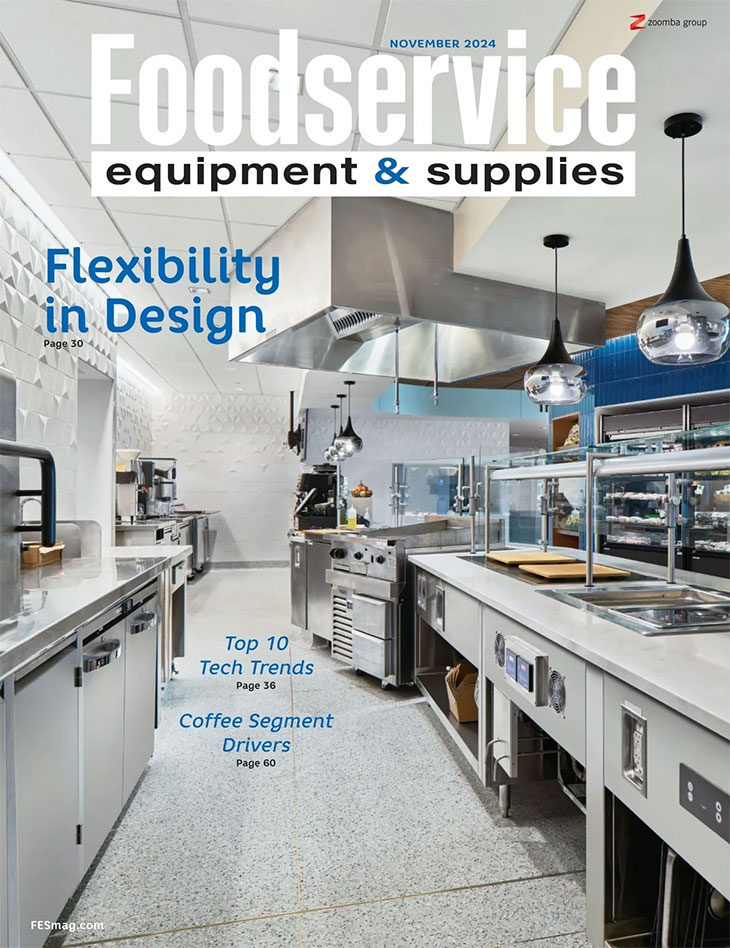For operators looking for speed and versatility, rapid-cook ovens not only save space but they also are convenient, affordable and easy to use.
Rapid-cook ovens, also called high-speed ovens, represent an effective option for those looking to cook very efficiently to high-quality standards. Also, the ovens can boost speed of service in existing kitchens for items that take a longer time to cook.
Typically used in operations that have limited space or in the front of house, the compact size of this countertop equipment offers powerful, versatile operation that is ideal for smaller footprints. The design of many rapid-cook ovens allows operators to stack these units, further maximizing space, capacity and volume.
Though operators use these ovens for a variety of applications, they very often designate rapid-cook units for heat-and-serve functions in the front of the house. In addition, operators can use these dual-technology ovens to reheat or even finish some food items they prepare in advance, such as appetizers or wings. Some items with longer cook times can be prepared quicker with the use of these ovens. Although this equipment also can be used for raw proteins, this is not common in commercial applications. Since most rapid-cook ovens are preprogrammed, and assuming food goes in at a fairly consistent state and start temperature, the doneness of the food product when it comes out of the oven is virtually guaranteed.
Another benefit is rapid-cook ovens are extremely efficient to run since most of the time, this equipment is sitting idle. This drives operational costs down to just a few dollars a day on average for most operations.
This equipment utilizes at least two heat transfer methods, which increases cooking speed by more than 50%. Rapid-cook ovens may combine technologies for faster heating, such as microwave, convection, impingement and radiant heating. Although rapid-cook units don’t always include a microwave component, the majority use this technology for rapid heating in addition to another method for browning.
Units that combine microwave, forced convection and infrared radiant heat offer cook times that can be up to 15 times faster than a conventional oven, which can help increase menu flexibility. Some compact microwave/convection oven models cook four times faster than conventional ovens.
The majority of rapid-cook ovens have stainless-steel construction inside and out, with ceramic plates inside. Units may also include adjustable legs that are chrome-plated as well as ergonomic handles.
Since most rapid-cook ovens are designed for countertop use, depths range between 20 and 30 inches. Capacities also vary, with units accommodating ¼- to ½-size sheet pans, full-size hotel pans, and 12- or 14-inch pizzas.
Temperature ranges vary, depending on the type of oven, but are typically between 150 degrees F and 550 degrees F. Microwave wattage ranges from 1,000 to 2,000, depending on the unit. Generally electric, rapid-cook ovens require at least 30 amps and either 208 or 240 watts of power to run.
One of the biggest selling features of rapid-cook ovens is the ventless operation. This allows operators to install these units virtually anywhere, offering design flexibility and potentially enhancing speed of service. Ventless technology makes a big impact on limiting emissions and saving energy since ventilation hoods consume extra energy and drive-up utility and installation costs. Already existing building HVAC is the most economical and environmentally friendly way to offset sensible and latent heat loads produced by rapid-cook ovens.
These ovens generally provide multiple set point temperatures, with some models offering automatic programming for close to 400 menu items. The data keys allow for the electronic transfer of cooking programs, which can save cooking time and aid in product consistency.
Connecting Wi-Fi-enabled rapid-cook ovens to the internet can make uploading recipes more efficient. With this capability, operators can leverage technology by sending menu updates to equipment in multiple sites.
For front-of-house use and/or improved aesthetics, rapid-cook ovens are available in various exterior colors. Some types also offer windows for easily viewing the cooking process. An auto-unloading feature presents the food to operators upon its completion.
Depending on the menu, operators may want to select from a number of rapid-cook oven accessories including Teflon pans, sheet metal pans, baskets and pizza screens.











